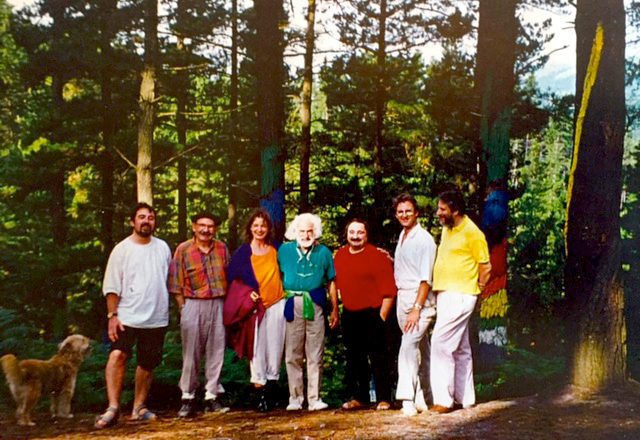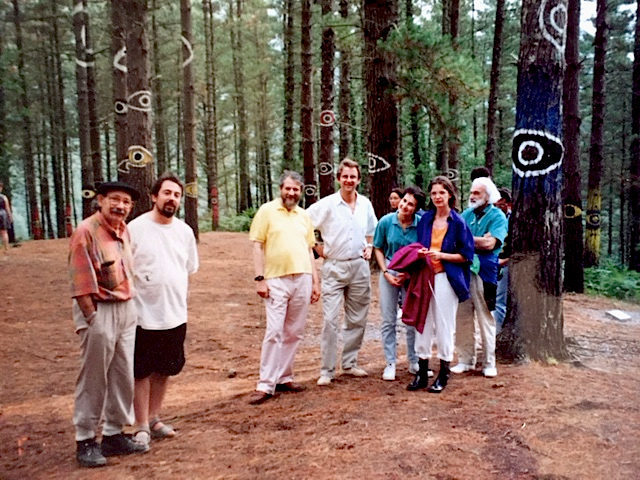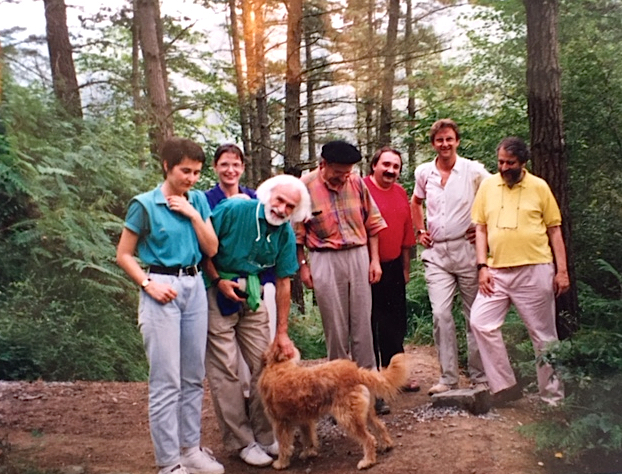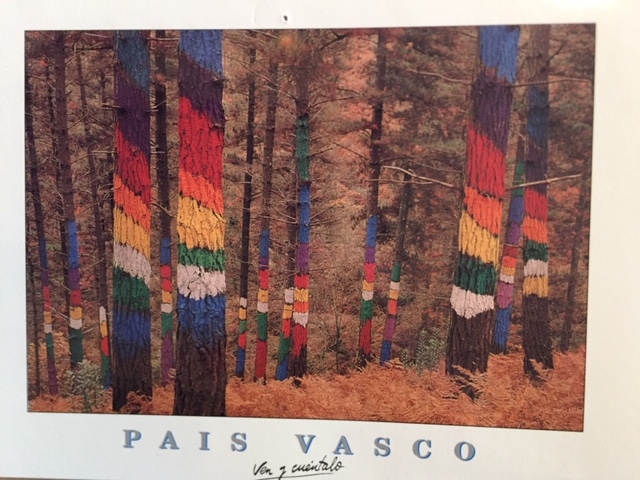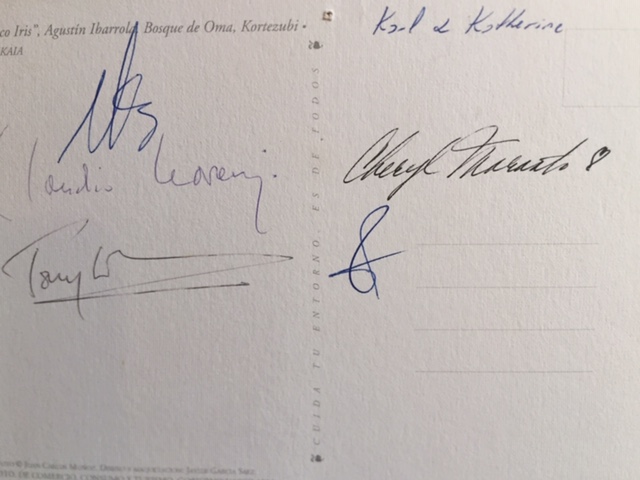How I Became a Basque Celtic Sorceress: Protectress of the Sacred Forest of Oma, Spain
I was attending a private retreat at a Basque farm, following a conference of the World Congress of Music Therapy in Vittoria-Gasteiz, in northern Spain. The scientists at our retreat were sitting outside on the farmhouse porch, giving talks on various topics. But every so often, a man with a pitchfork came walking along the nearby dirt road, and the small dog sitting under our table raced out barking and went chasing after him, nipping at his heels. After three or four such occasions, I asked our hostess, Aitxiber, “Why is your dog chasing people like that?” She said, “Oh, it’s okay. He only chases that one man.”
The next day, the scientists and I were invited for a private visit by the famous Basque sculptor, Agustin Ibarrola, to the Painted Forest of Oma. As we all hiked up the steep hill in the rain, to enter this “Enchanted Forest,” the story was explained to me: A few years earlier, Mr Ibarrola and his wife had left the capital and moved to the region of Oma — site of neolithic caves and other ancient mysteries — where they had painted all the trees with different images that change visually — rainbows, eyes, abstractions — as you move uphill through the forest.
However, some of the trees they painted were located upon two separate farms. One farmer reportedly said, “You can’t paint these trees! These trees belong to me!” And he cut them all down! (That was the man with the pitchfork whom our dog did not care for.)
The government of the Basque region was so alarmed that they bought the land where the remaining trees were located, to protect them for posterity. And then they had the property surveyed.
When we reached the top of the hill (we were all communicating in various languages: Spanish, Portuguese, French, Basque) I wanted to share something with Mr Ibarrola: I said, “I think these trees called you to come here and paint them, in order to rescue them. They were probably an ancient Celtic forest, sacred to the Druids, that no one would ever have known about if you had not painted it.”
Mr Ibarrola said: “The Sorgiña! She has arrived!”
It was explained to me that in Basque a Sorgin is a Shaman, Sorcerer, or (in Britain) a Warlock and a Sorgiña is a (good) Sorceress or Witch (just as in Spanish it is Brujo and Bruja.)
It turned out that, as soon as the government surveyed its acquisition, they discovered — just over the top of the hill — the ruins of the largest Celtic religious site yet discovered along the north coast of Europe!
